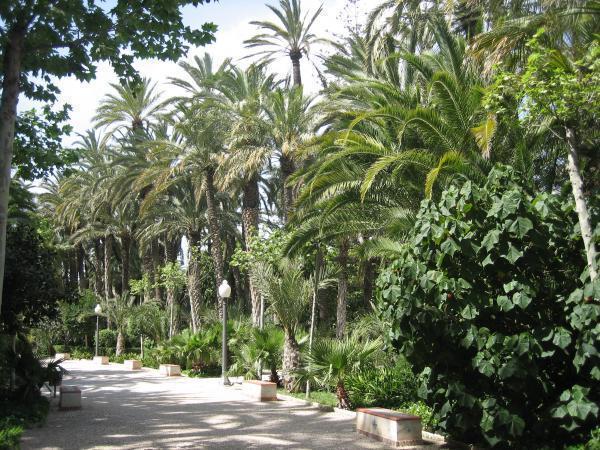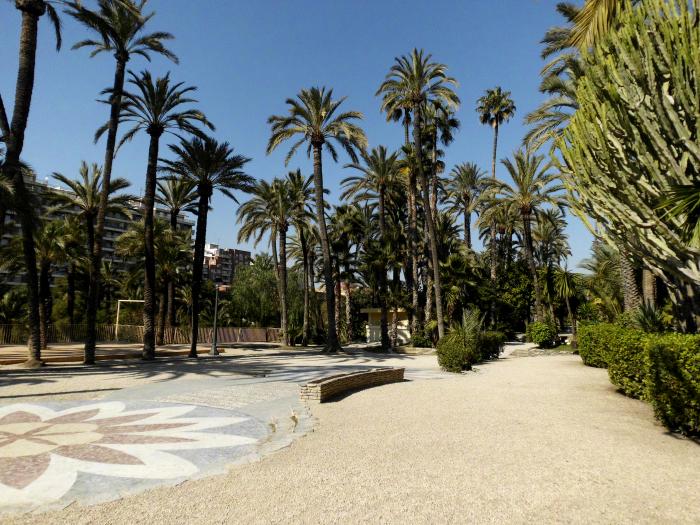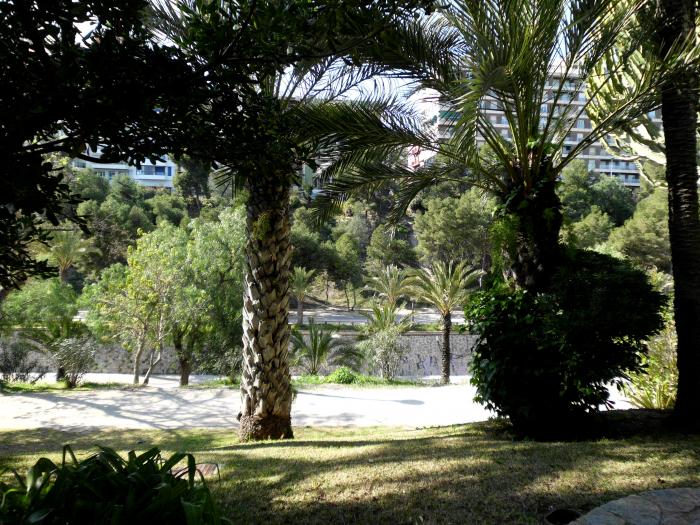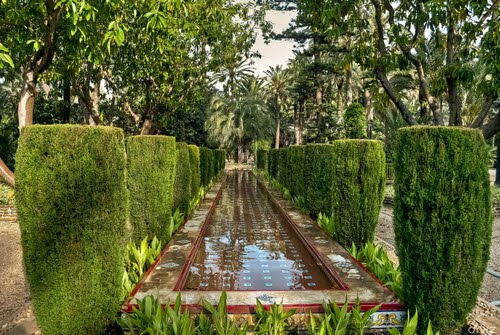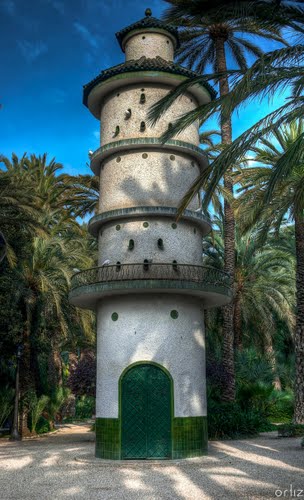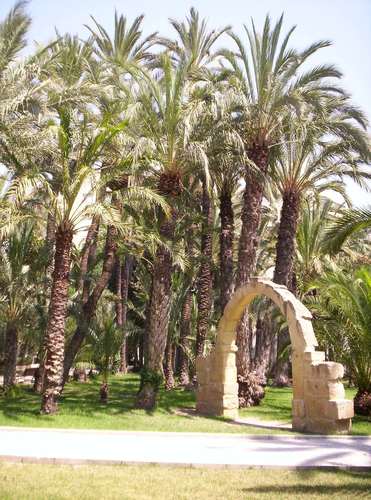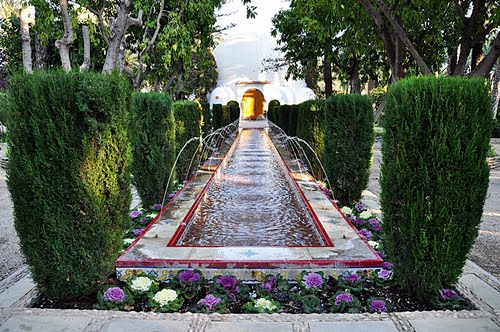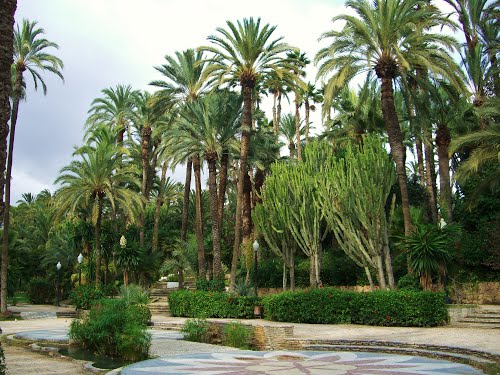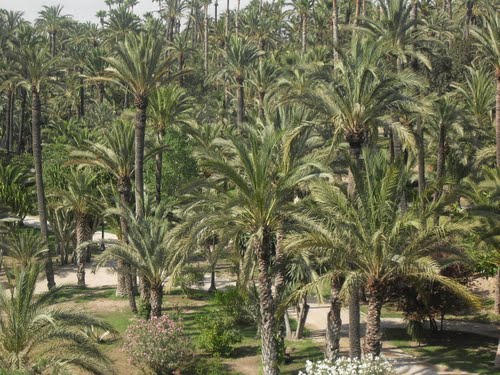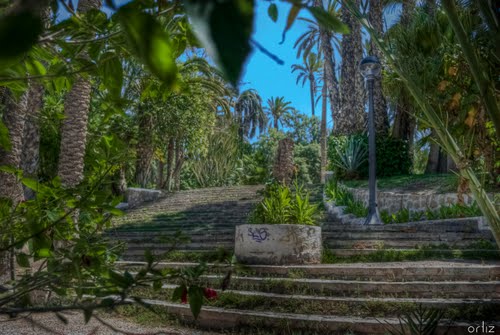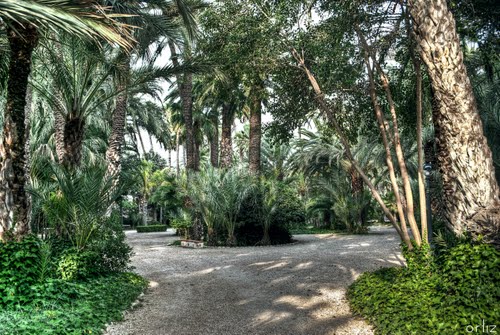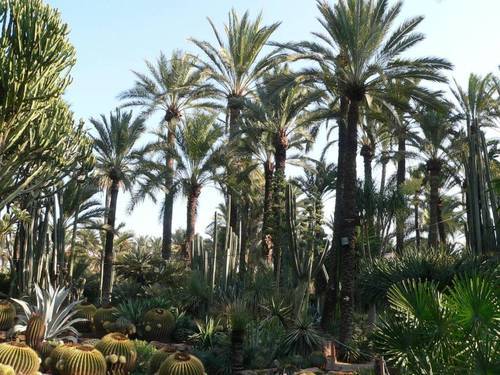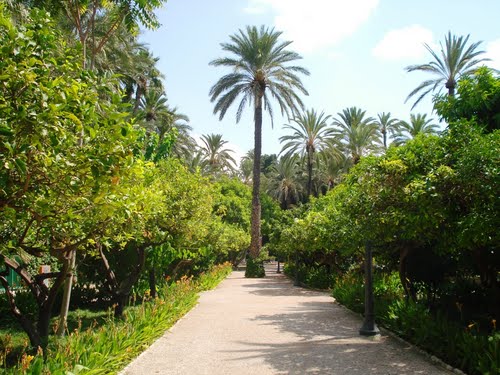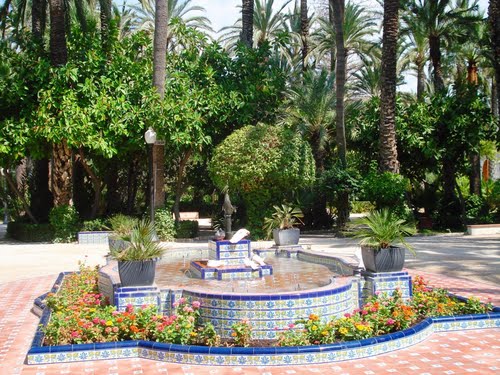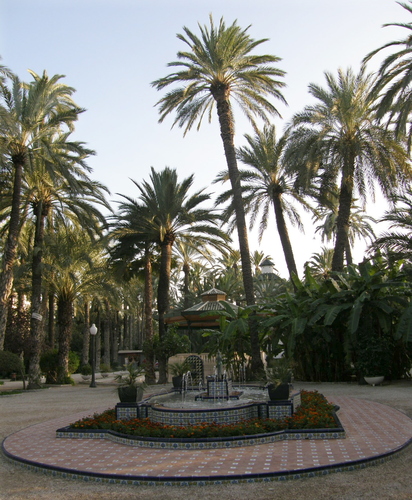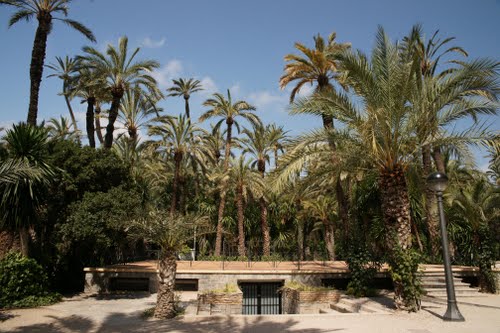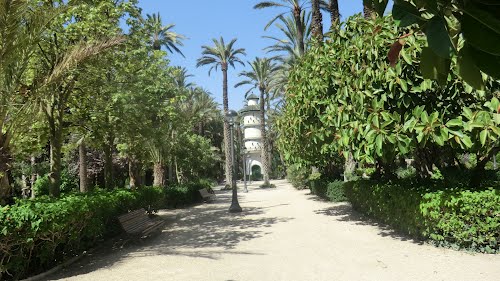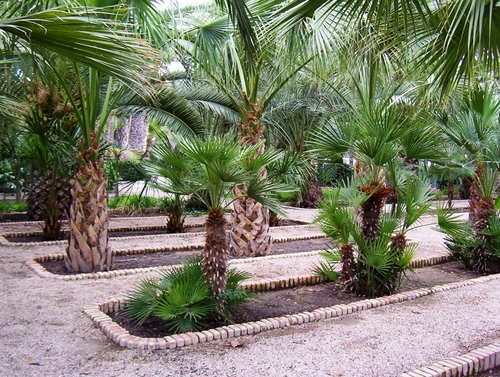The Palmeral or Palm Grove of Elche is the generic name used to designate a system of date palm orchards in the city of Elche.
Currently, in the urban area of Elche there are a total of 97 different orchards containing about 70,000 date palms, mostly in the east bank of the Vinalopó. This number does not include other large plantations located around the city proper. All together, the number may be close to 200,000 palms. The Palm Grove covers over 3.5 km², including 1.5 km² within the city of Elche.
It is the only palm grove of its type anywhere in Europe, the northernmost of its kind and one of the largest in the world, surpassed in size only by some in Arab countries.
History
The first date palms in Elche could have been originally planted as early as the 5th century BC by Carthaginians who settled in south-east Spain. The Romans introduced the first elaborated forms of agricultural water management. Under the Moors the city of Elche moved from its Roman location 7 km away to its current location. The moors further developed the irrigation system with the brackish water of the Vinalopó, which is basically the same as the one still in use for the palm orchards. The formal landscape of the palmeral that still exists today was created when the city was under Moorish control between the 7th and 10th century. Following the Reconquista by the Christians, a local handicraft developed involving desiccated palms and their weaving for processional use in Palm Sunday. Also, improvements were added by the new settlers, such as the construction in the 17th century of Elche's dam in the Vinalopo, some 6 km upstream of Elche, for a better management of the Palm Grove irrigation. Similarly, laws were passed to protect the plantation.
The palm groves form a rather compact group in the eastern part of the town. The boundaries of the plots are rectilinear, so they are mostly square or rectangular in plan. They were bounded by –nowadays uncommon– cascabots, or by plastered walls of undressed stone 1-2 m high, which are still present. The plots contain the houses of the tenants or owners of the land, although these are nowadays mostly in a ruinous condition, since most of them have been purchased by the local council and nobody is living there anymore; for those houses located in plots which have not been bought, they have been mostly deserted by the owners due to the constrained development of such houses originating in the law governing and protecting the Palm Grove.
The trees are planted in single or double rows, following the lines of the ancient –and still functioning– irrigation canals, which are of special interest to the UNESCO as an integral part of the Palm Grove. Seen from the air, the different plots form an irregular grid pattern.
Historically, the orchards were dedicated to the production of dates for human and livestock feeding. The terraces created within the plots have traditionally been dedicated to agricultural production with more valuable species such as pomegranate or vegetables which benefitted from the shade created by the palm trees around. This enhanced agriculture in a region where summer temperatures are consistently above 30 °C and annual rainfall is only about 250 mm.
As the town spread in the 17th century, some of the orchards were cut down. This process was exacerbated with the industrial revolution and the arrival of the railway in the 19th century. The agricultural role was progressively abandoned. By the second half of the 20th century the date harvesting had become an anecdotal activity mostly for domestic or very local consumption.
However, the orchards had the affection of locals and were kept after their economic function had ended. Progressively, some of them were turned into public gardens while respecting the original lay out. Currently, the Palm Grove´s role is more as a landscape and a cultural asset than as an agricultural site. The latter function focuses on the production of "white palms": desiccated palm leaves for decoration and processional use on Palm Sunday which are sold throughout Spain and even abroad. The palms are a part of the local identity, and so have been historically represented in the town's coat of arms.

